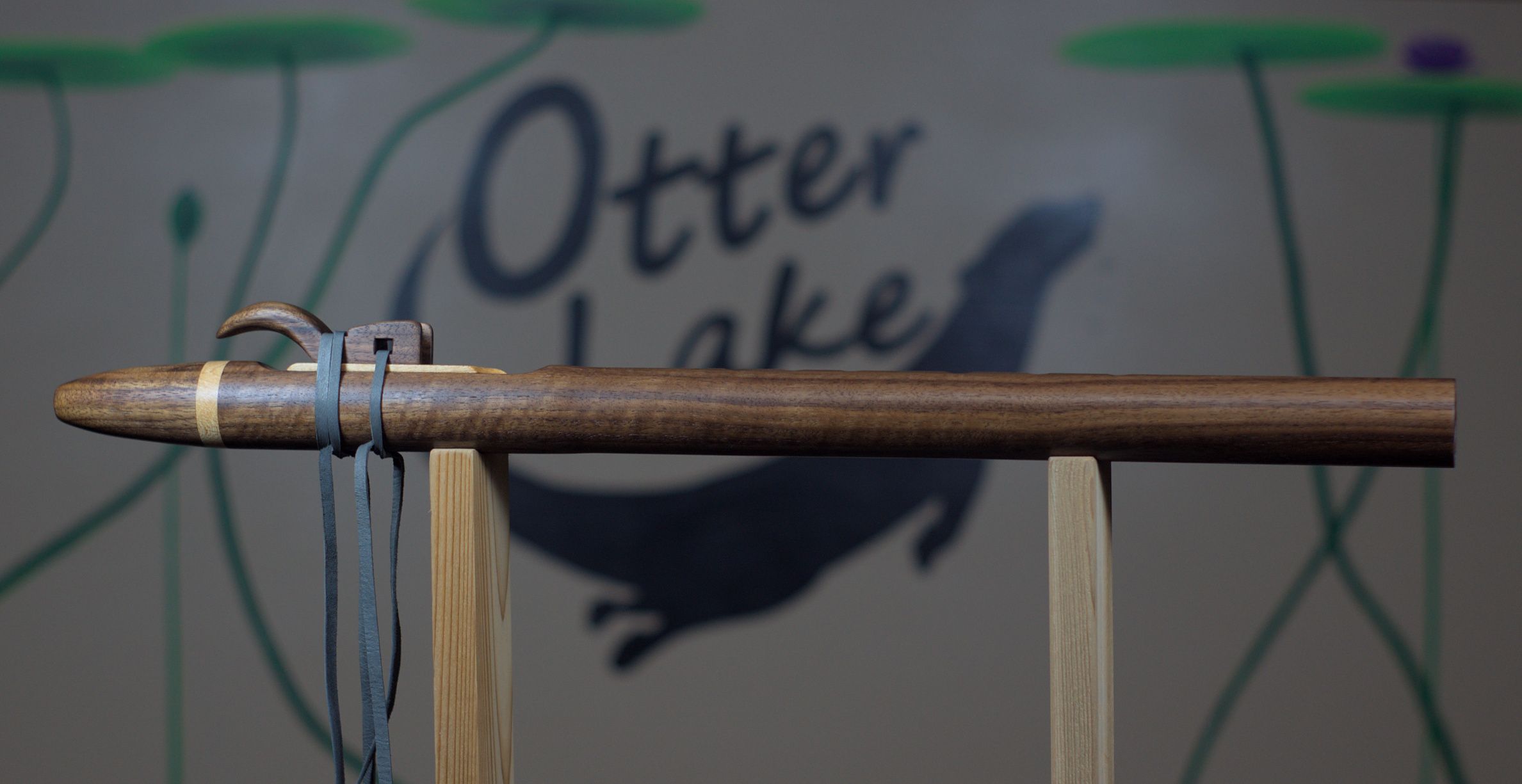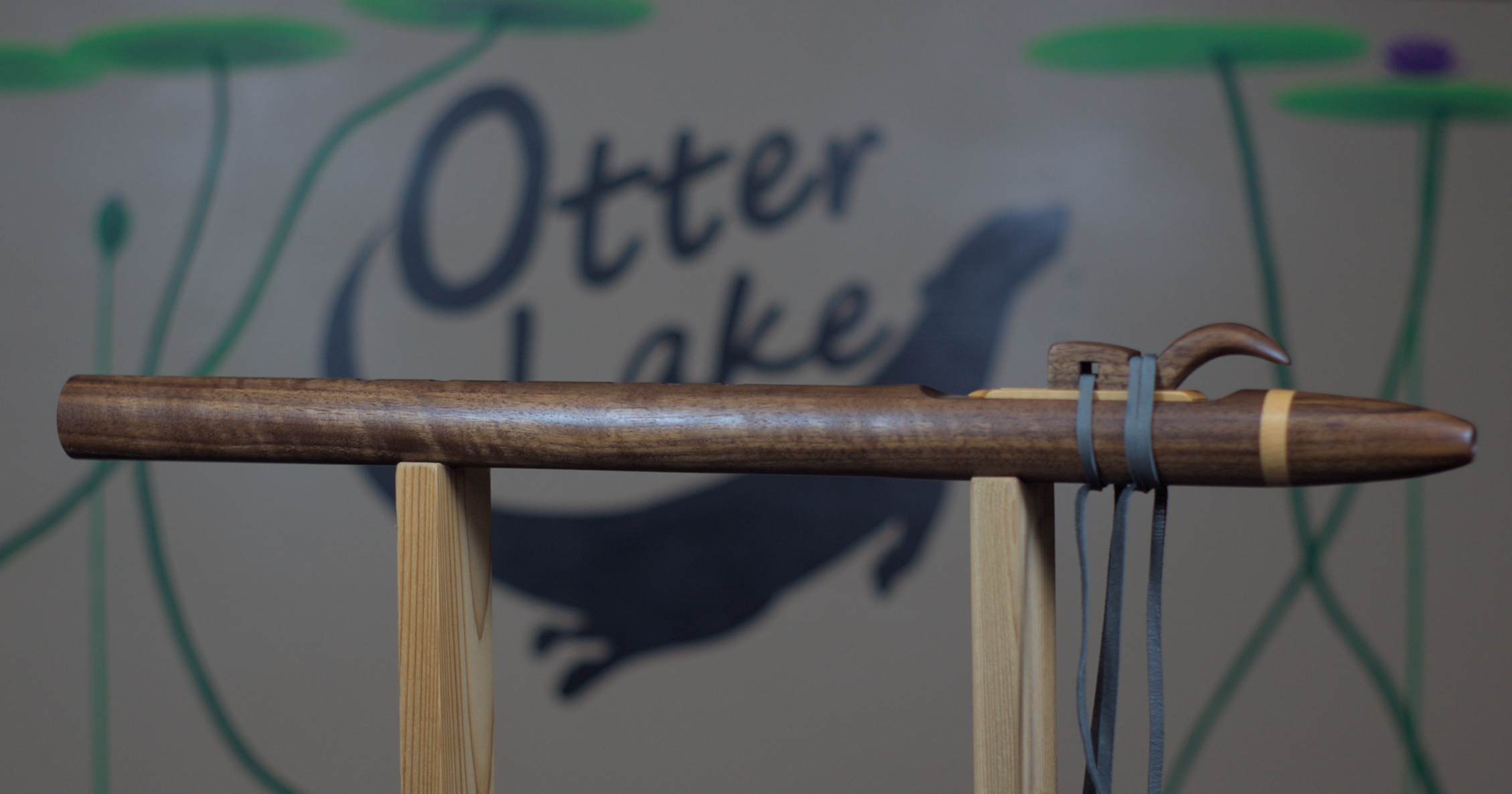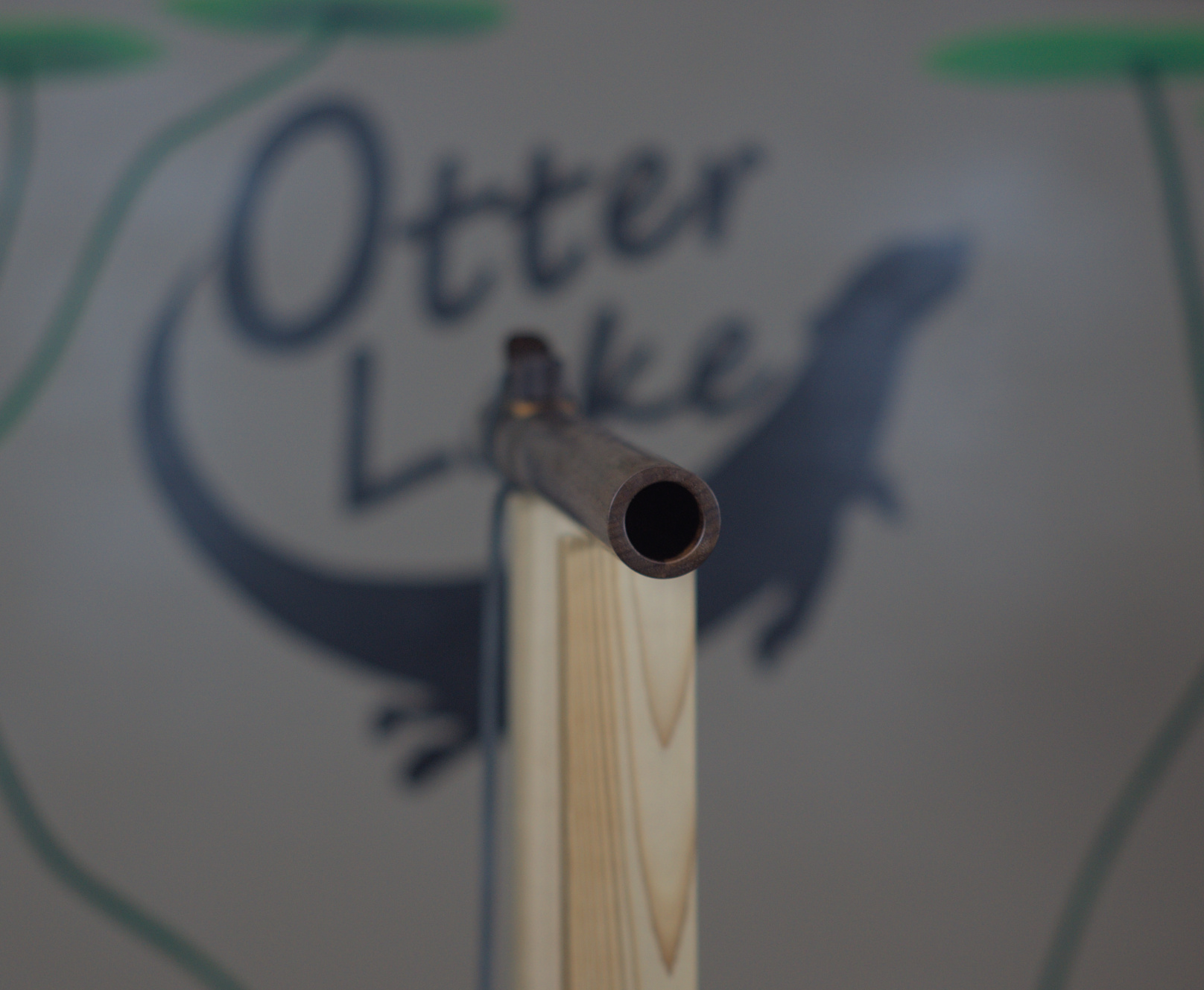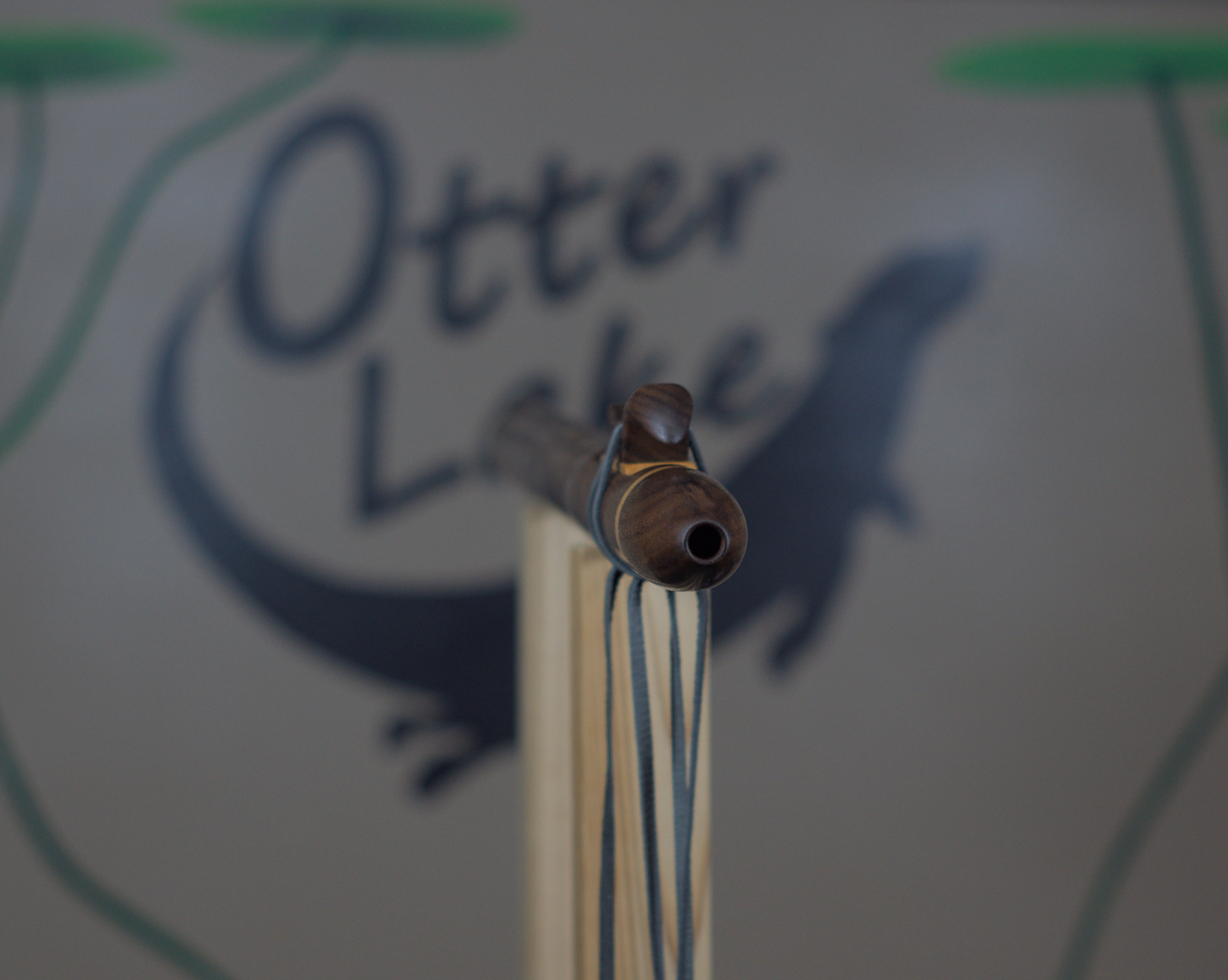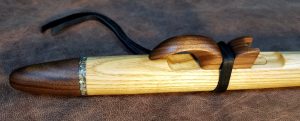I didn’t add much embellishment on this flute (and another just like it) because this Claro Walnut is just so lovely.
The fundamental note is G4 and the hole pattern is based on the standard pentatonic minor scale.
No side rails yet the bird isn’t going anywhere with two straps instead of one.
This flute doesn’t explode with deep tiger striping at every turn, but you’ll notice loads of subtle depth and character as it catches certain lighting angles! You won’t be disappointed. Incredible wood.
NOTICE — Darker Tone Type: The bore is .875″ diameter instead of .750″ as I normally use of A4 or G4. This makes it a little shorter (for backpacking?) and gives it a more earthy, darker, more mellow tone. This, to me, says, “tribal, ancient, woody” even more than the brighter or cleaner tones with fewer mixed harmonics. Even though I avoid hiss or excess airiness, this larger diameter in this key unavoidably creates a darker tone (intentionally) that can make you aware of the blowing simply for acoustic reasons. Some even go as far as 1″ dia. for this type of tone in A4’s or G4’s but, personally, I can hear the complexity enough at .875″. If you like a brighter, cleaner tone, look for my flutes that are either .750″ bore in A4 or G4, or .875″ is also brighter in deeper flutes like F4 and F#4.
Further notes of construction:
You may notice slight elements of asymmetry in the roundness of the occasional hole due to the lengthy hand-tuning process that involves targeting one side of the hole at a time (instead of enlarging 360 degrees with a drill or hot poker). This is because I shoot for maximum cross fingerings or most extended scale ability I can get out of each model. Each hole has two notes I’m simultaneously tuning via 45-90 degrees of the hole at a time, and I prioritize tuning over perfect roundness of hole.
This is a reasonably chromatic flute (some models such as this one may have one chromatic, cross-fingered note on the sharp side etc., but all standard notes are tuned to A=440 Hz at 72F).

